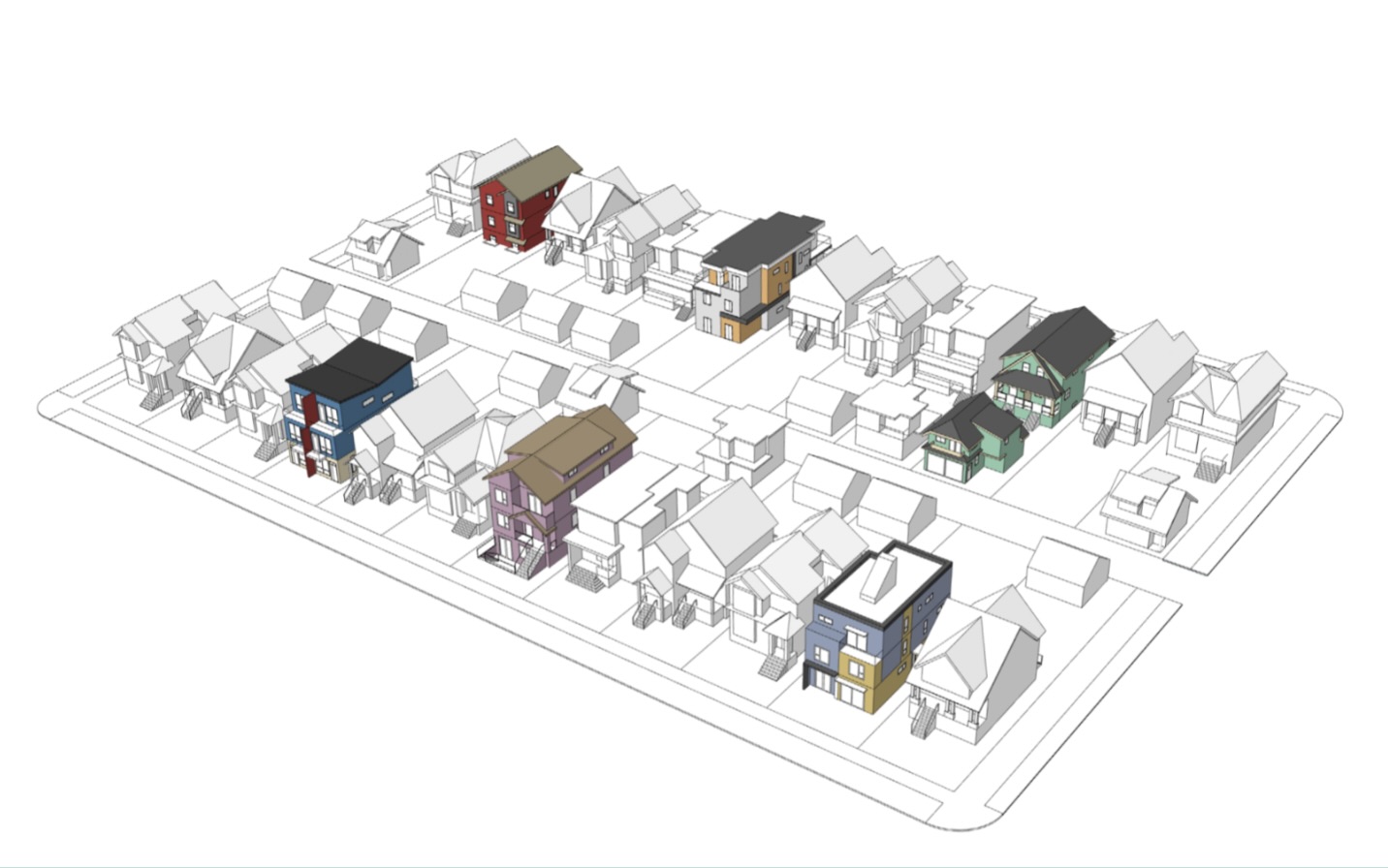
Sep 19, 2023: City Council approves Missing Middle Housing Plan
Whether knowingly or not, Mayor Ken Sim invoked the words of French philosopher Voltaire as he defended the Middle Missing Housing Plan (MMHP) from critics who said it won’t help solve Vancouver’s housing crisis. “Perfect is the enemy of good,” Sim said at the conclusion to the Sept. 14 public hearing, during which Council unanimously approved the plan to allow multiplexes in all residential neighbourhoods.
Sim was responding to housing and development industry experts who criticized the plan, calling it “timid” and saying it will not produce the number of housing units Vancouver needs. Senior Planner Paula Huber admitted the plan was incremental and said she expected roughly 200 multiplexes per year would get built.
About 70 people spoke at Thursday’s hearing and the City received 500 letters of correspondence regarding the plan. While the majority of speakers involved in Vancouver’s housing sector said they supported the plan — albeit tentatively — several took the planning department to task, saying it was the bare minimum the City could do. Other speakers and writers complained about the lack of affordability. One speaker noted the average multiplex strata unit (costing $1.1 million on the Eastside and $1.5 million on the Westside) will require an estimated annual income of $230,00 or more). Others said more rentals are needed, but the City said financial testing showed secured rental housing is not generally viable under the MMHP, which is why staff expects modest take-up of this option.
The move to multiplexes is in line with provincial government legislation to end “restrictive” zoning — the government’s term for single family housing — in all BC municipalities by incentivizing four to six strata units on single lots and up to eight units on larger lots if they are secured rental.
The public hearing also brought out neighbours and heritage groups who opposed the plan for a variety of reasons. Dunbar resident Carol Volkart said that while several meetings took place between developers and staff on the MMHP, public engagement was scant. Many of her neighbours, she said, had only just learned about the plan. “I find the lack of public input troubling. Changes this big should not come as a surprise to residents,” Volkart admonished Council.
Upper Kitsilano resident Barbara May was concerned the plan encourages the removal of front and back lawns and large boulevard trees at a time when extreme climate events are affecting all regions.
Vancouver heritage groups, meanwhile, spoke about the need to retain both heritage and character homes.
Elizabeth Murphy of the Vancouver Character House Network said a petition to save Vancouver’s pre-1940s houses had collected almost 9,800 signatures. Murphy emphasized that the City needs to remove any biases favouring demolition from all zoning and building code bylaws (including the MMHP) and find ways of reusing older existing homes rather than demolishing them.
Vancouver Heritage Foundation spokesperson Alison McNeil told CityNews that as developers look to build more multiplexes, heritage buildings will be at risk of demolition. “There’s something called floor space ratio [FSR] in planner speak, and this is about how much density you can put on the lot,” McNeil explained. “If you retain the home, the heritage home, the city will give you less density than if you bulldoze and put in a new multiplex.”
This prompted Cllr. Lisa Dominato to bring forth an amendment to increase the FSR for heritage and character homes in order to put them on a level footing with multiplexes. The amendment received the unanimous support of Council, who requested a report back from staff. Said Cllr. Adriane Carr: “I’m a great believer that touchstones in our landscape give us a sense of knowing who we are, where we’ve come from.…”
“It’s very important we don’t take any steps that are going to disincentivize retaining character homes,” added Cllr. Peter Meiszner.
Some speakers decried the loss of intergenerational housing, blaming the authors of the MMHP for lowering the floor space ratio for new single-family detached homes; others worried about the lack of infrastructure such as sewers, schools, community centres and parks to meet the growing densification. The public hearing stretched over eight hours with many participants speaking passionately about their concerns, but Councillors had few questions for speakers.
A request from Cllr. Christine Boyle for staff to make multiplex units more accessible to the elderly and people with disabilities passed unanimously.
Assistant Director of Housing Dan Garrison said that staff are currently working on a proposal under the Vancouver Plan to allow four to six storey apartments in neighbourhoods. A staff report is expected in November.



Wendy Germaine
Posted at 13:17h, 23 SeptemberI am horrified the City wants to take down homes and replace them with multi-plexes. Who can afford them? This is not solving the housing crisis; maybe for a few that can afford it, but not the general public. I think new homes are not well built and will not stand the test of time. Most countries retain their heritage buildings and cherish them. Why can’t Vancouver? At some point I might need seniors housing and I see very little to nothing being built for the older generation. Have our lives and the city our parents built meant nothing to the City? Parents with children should be able to live in the city they work in. The rental market is so expensive and City Hall knows that, but nothing is being done to provide more affordable housing. Vancouver is short of workers in every sector, yet people cannot afford to work here. The City needs to do better for all people who have limited incomes.
penny noble
Posted at 15:59h, 24 SeptemberIt is good to see some amendment to address Heritage and character home retention, but I fear it is not enough; this plan still favours demoliton about all else. There are so many ways to enhance what is already there to create more units, as seen in parts of Kits and also Lower Shaughnessy, and the area between Arbutus and Burrard, from West 10th to 16th Ave.
The area I live in, south of West 10th Ave, still has zoning that favours the building of very large single family homes or huge duplexes, resulting in loss of character and replacement with much more expensive dwellings whether they are sold or rented. I wish someone would finally listen at City Hall and change this zoning to be the same as the rest of Kitsilano. Every day a house goes down and a monster replaces it. On my street they were almost all rental houses with reasonable rents. Now they are super expensive and have very little character.